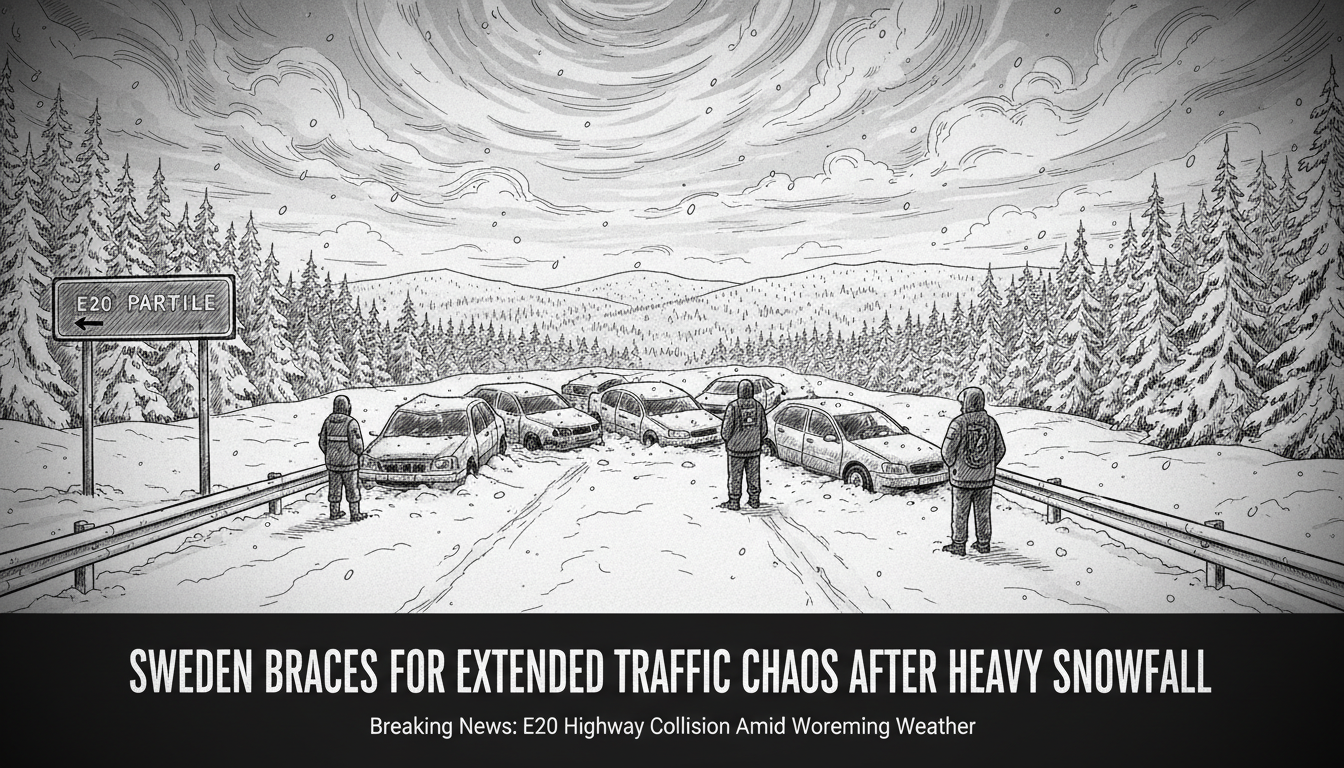Heavy snowfall swept across large parts of Sweden on Wednesday, causing widespread traffic disruptions that authorities warn could persist for days. The snowstorm arrived as predicted, with meteorological officials issuing yellow warnings for snowfall around Lake Vänern and parts of Västra Götaland on Tuesday. These warnings later expanded to include much of southeastern Götaland, eastern Svealand, and the southeasternmost parts of Norrland.
Despite advance warnings, traffic problems became extensive throughout Wednesday. In Partille, five vehicles collided on the E20 highway. Rescue services around Örebro responded to multiple accident alerts throughout the morning and early afternoon.
Meteorologists indicate the transportation problems will likely continue in the coming days. A weather expert explained the situation in a public statement. "We have fluctuating temperatures and additional precipitation moving in," the meteorologist said. "People need to exercise extreme caution when traveling on the roads."
This weather event highlights Sweden's ongoing challenges with winter transportation infrastructure. The country invests heavily in snow clearance and winter road maintenance, but sudden temperature fluctuations create particularly hazardous conditions. Ice forms beneath fresh snow, making roads treacherous even for experienced drivers.
International residents and visitors should understand that Swedish authorities typically manage winter conditions effectively, but rapid weather changes can overwhelm response systems. The E20 collision in Partille demonstrates how quickly multiple vehicles can become involved in accidents during poor conditions.
Sweden's transportation network faces additional strain during such weather events because many commuters rely on personal vehicles rather than public transport. This creates higher traffic volumes that must navigate dangerous roads simultaneously.
Road maintenance crews work around the clock during winter storms, but their efforts cannot always keep pace with heavy, continuous snowfall. The meteorological service's extended warning suggests this system may bring several days of challenging conditions rather than a single storm event.
Travelers should monitor official weather channels and consider postponing non-essential trips. Those who must drive should ensure vehicles have proper winter tires, which are legally required in Sweden during winter months. Keeping emergency supplies in vehicles becomes crucial during extended periods of hazardous travel conditions.

